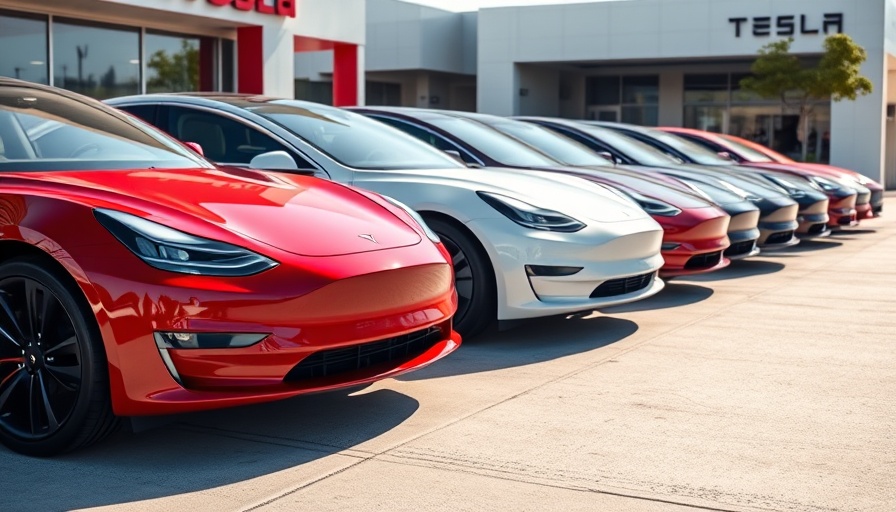
Used Tesla Listing Surge: A Harbinger of Change?
The recent spike in used Tesla car listings has raised questions among industry stakeholders about the automotive market's stability, especially as it pertains to electric vehicles (EVs). According to data from Autotrader, the number of used Teslas listed reached an astonishing 13,000 in the final week of March 2025, marking a 67% increase from the same week in 2024. This surge can be partly attributed to the growing discontent with Tesla's political affiliations as demonstrated by Elon Musk's recent activities, sparking protests and consumer backlash.
The Impact on Tesla's New Vehicle Sales
As Tesla sees an increase in used vehicle listings, new car sales have not fared as well. A report from Kelley Blue Book indicates that new Tesla sales fell by nearly 9% in the first quarter of 2025, while the broader EV market experienced a 10.6% growth in sales. Competitors such as General Motors and Hyundai are displaying substantial sales increases, with GM doubling its EV sales from last year. This shift raises questions about consumer preferences and the market dynamics for EVs amid a changing political landscape.
Cultural Reflections and Market Adaptations
The implications of these changing dynamics extend into the realm of consumer psychology. With an evident decline in new Tesla purchases, the resale market's activity reflects not just a response to Tesla's political controversies but also a broader cultural shift toward responsible consumption. As more consumers evaluate their vehicle options based on company ethics, the shift might encourage innovations in the EV market that prioritize ethical manufacturing and sustainable practices.
Future Trends: What Buyers Should Consider
As electric vehicle technology rapidly evolves, the implications of these shifts could usher in a new era of automotive purchases, where buyers are more informed than ever about brand values. Tesla's challenge will be to not only maintain innovation in their product line but to also manage their public image in an increasingly scrutinized market. For potential buyers, this situation offers an opportunity to evaluate their decisions critically and consider not just the vehicles themselves but the corporate ethics behind them.
 Add Row
Add Row  Add
Add 




Write A Comment